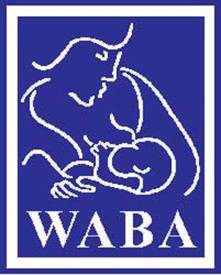Health Care Issues: Donor Human Milk Banking
According to the UN Convention on the Rights of the Child every child has the right to the highest available standard of health and every mother has the right to information on the benefits of human milk, both maternal milk and banked donor milk. The Global Strategy and the supplementary Acceptable Medical Reasons for the Use of breastmilk Substitutes 2009 promotes the use of breastmilk from a healthy wet nurse or a human milk bank as the best alternative to mother own milk. The American Academy of Pediatrics (AAP) strongly endorses human milk as species specific and the optimal nutrition for infants and advocates for screened human milk to be used. breastmilk that has not been screened has the risk of transmitting infections such as hepatitis and HIV.
Support for the use of screened donor human milk has been available for more than one hundred years. The resources for systematic organisation of milk banking for medical use vary greatly from country to country. It is very limited in some countries such as Canada where there is only one milk bank, somewhat limited in the United States where there are 10 milk banks, and is highly organised in countries such as Brazil and in some European countries. Moreover, the use of donor human milk, in countries where it is culturally acceptable, is generally limited to addressing the needs of premature infants. It has not generally been used to address the needs of women to support the establishment and maintenance of exclusive breastfeeding.
There are indications that issues around mothers’ lack of access to donor human milk has implications for breastfeeding protection, promotion, and support. Without women having ready access to a collective resource of donor human milk, there is the implicit Implication that infants’ and young children’s access to human milk can only come from their own mother. Lack of access to donor human milk contributes effectively to an ideological divide between women who can provide for their infants and those who cannot. It also means there is no place for mothers with excess milk supply who want to donate to others. Providing for donor milk banking services, according to Arnold, provides for ethical principles of justice that address fair access and autonomy.
Many different needs for donor milk have been identified and include but is not limited to:
- Critically ill NICU infants who need donor milk from other mothers who have delivered prematurely
- Mothers who need support in establishing exclusive breastfeeding.
- Support for women with HIV
- Support for mothers who meet breastfeeding challenges in maintaining exclusive breastfeeding.
- Critically ill pediatric patients.
- Chronically ill/ dying pediatric patients
- Source for donation for women who have excess or whose infants have died
- Emergency resources emergency departments needs
- Contribution to community food security
Lack of human milk banking has been linked to the suppression of the human right to altruism. The donor human milk-banking void has also provided the infant food industry with opportunities to research and market infant formula to doctors. Commercial interests in the medical use of donor milk have resulted in the development of a least one USA- based company.
There are many barriers to the use of donor human milk. The limited medical demand for use of donor human milk has affected medical research, policy development, and health services education. For example, the erroneous medical system belief that donor milk is limited in supply is the basis of the rationale for infant formula development and research into humanizing infant formula. This void has allowed for the infant formula industry opportunities to redirect research agenda away from donor human milk to promote infant formula development. Infant formula, rather than banked donor human milk, has become the default resource in NICU, postnatal and pediatric wards. The infant formula industry, through donations of free formula to health care facilities, has been identified, as a factor in the suppressed donor human milk banking. A consequent of this is that Infant mortality based on infant feeding method is systematically ignored.
Women’s lack of access to safe donor milk to support them through breastfeeding challenges has led to a recent development of micro-local informal sharing through social networking via Facebook.
Lack of policy, explicitly addressing the use of donor human milk, according to Arnold means that many patients are denied access to it. There is a critical need for research to support policy developments. There appear to be s an opportunity for WABA core partners to explore how access to donor human milk as a human right can contribute to building a stronger foundation for food sovereignty and security. There is critical need to explore how including donor milk banking, as community resource, could support the expanded BFI in providing women and families with a more options in their infant feeding decisions.
Reframing donor human milk as a collective women’s contribution to the health of infants and children of their communities would also raise the value of the work involved in expressing milk. This could help improve women’s self esteem and status in their society. This could potentially impact the formula industries’ system of ongoing donations to hospitals. This is particularly important to the most vulnerable women having HIV, addictions, and those dealing with emergences and food security issues.
